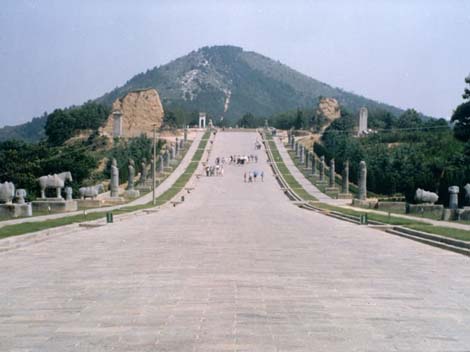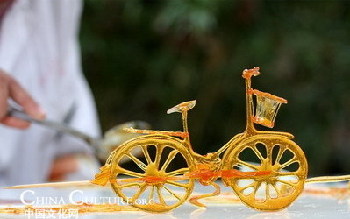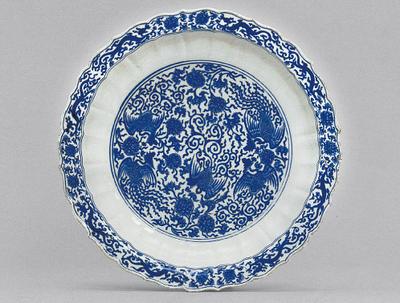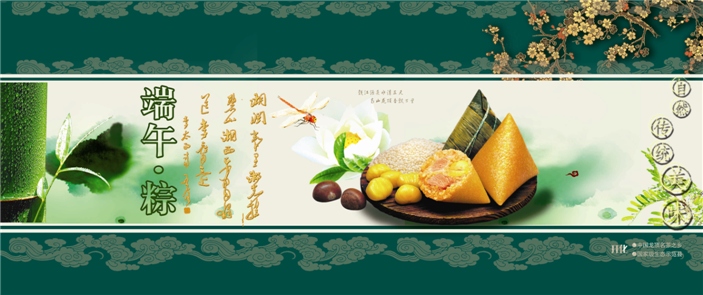| Home > China Feature |
Hangzhou attractions

Lingyin Temple
Lingyin Temple, or Temple of the Soul's Retreat, got its name from its tranquil surroundings. Sheltered by forested hills on three sides, the temple is a quiet and sheltered sanctuary (when it is not thronged by visitors). Lingyin (Hidden Spirit) Temple is one of the largest and most visited Buddhist temples in China and holds the largest statue of the Buddha Sakyamuni in the lotus position.
It was built in 328 AD by the Indian Monk Huili. It prospered and flourished during the Five Dynasties Period (907-960) when there were 9 buildings, 18 towers, 72 halls with 1,300 rooms and more than 3,000 monks. Over history, the temple has been damaged and undergone renovation several times. It has recently been rebuilt in its original style.
The temple consists of the Hall of the Heavenly King, Hall of the Great Hero, Hall of the Buddha of Medicine, East and West Winding Corridors and several other buildings. In the center of the Hall of the Heavenly King, sits a statue of Maitreya, the fat, bare-bellied Buddha with a smiling face – the laughing Buddha. In the hall of the Great Hero, the main hall in the temple, the central spot contains a magnificent statue of Sakyamuni, founder of Buddhism. The 19-meter tall statue is seated on a 10.5-meter-high lotus flower amidst great red pillars and murals. Behind Sakyamuni is a colorful sculpture of 150 Buddhas. One other recently added hall holds the 500 Arhats: bronze statues resembling 500 of the earliest high-ranking Buddhist disciples in China.
As an important Buddhist temple in the region, Lingyin Temple also houses a large collection of Buddhist treasures and relics which are significant in the development of Buddhism in the region. The temple is now very popular among tourists and pilgrims, seeing thousands of worshipers per day during peak season.

Six Harmonies Pagoda
Located on the north bank of the Qiantang River, Six Harmonies Pagoda was built in 970 to dispel the river's tidal bore, which was thought to be an evil manifestation. It was believed that unwanted natural phenomenon could be subdued by the building of pagodas, according to Buddhist understanding. Fortunately for tourism in Hangzhou the tidal waves don't seem to have been significantly suppressed, and still hold the world record of 9 meters (30 feet).
Liuhe Ta, Six Harmonies Pagoda, was once a seven-storey stone pagoda, but later a 13-story wooden pagoda was built around the outside enclosing the wooden structure. The top level, accessed by a spiral staircase in the stone pagoda, offers a fine view of the surrounding mountains, the Qiantang River and Qiantang River Great Bridge, which the largest double-decker (road above, rail below) bridge is built by China. The ceiling of each level is carved and painted with flowers, birds and animals in an elegant and delicate style.
Six Harmonies Pagoda is named after nearby Six Harmonies Temple, but it could be said there are six harmonies within the structure itself where the 7-story inner pagoda harmonizes with the 13-story outer pagoda.

Hefang Old Street
Hefang Street is a well-designed old pedestrian street, which is the epitome of old Hangzhou. The original street has been ruined and it recently takes on a completely new look after larger-scale of restoration. Shops selling art crafts, souvenirs, silk, teahouses, and restaurants line on both sides of the street. Many famous century-old shops including Hu Qing Yu Tang, Wang Xingji Fans can be found along the street.
Hefang Street is otherwise known as the Snack Street for the diverse food it serves. The street clearly concentrates food from all around the country, while at some time highlighting the local flavors.

Song Dynasty Town
Located adjacent to the West Lake, the Song Dynasty Town is a recreation of a Song Town. The Song Dynasty ruled China from 960 to 1279, moving their capital to Hangzhou in 1229. The Song Dynasty was a period of prosperity in China. Marco Polo is believed to have visited China during this time and was amazed to see huge cities of over a million people, vast amounts of commerce and busy river and canal traffic. The town is arranged in an original Song style, with streets lined with colorful shops, stores, restaurants. The town can be divided into six parts, Reappearance of the Painting "Riverside Scene on Qingming Festival", Jiulong Square, Song Dynasty Town Square, Fairy Hills with Wonderful Towers and Song Palaces.
Shows and plays featuring Song culture are performed here daily.

Zhexi Grand Canyon
China's legendary man-made waterway, the Grand Canal, runs from Beijing in north to Hangzhou in south stretching 1,747 kilometers long. It is 10 times the length of the Suez Canal and 20 times of the Panama Canal. It's another wonder made by ancient Chinese.
Interconnecting five rivers, the Haihe, Yellow River, Huaihe River, Yangtze River and the Qiantang River, the canal served as a significant mean of transportation over centuries. It offered much facility to transport food and goods from the south to north and boosted commercial development in the country. The section of Suzhou to Hangzhou now is still in active use. Vendors row their boats directly to households, shops in local townships.
Boat trip along the canal often offers tourists a nice view of China's typical water villages, arched stone bridges, riverside ancient buildings as well as country side.
Art
 more
moreSculpture in Qianling Mausoleum
The sculpture of Qianling Mausoleum is the main relic of the ground ...

A Sweet Art:Sugar Painting
In and around China’s southwestern Sichuan Province, it is usual to ...

Chinese Treasure Displayed at Sha...
There are four treasures of the Chu Minority Culture displayed at th...

Custom
 more
moreMartial Arts
Shaolin Wushu Festival sparkles with 60,000 perf...
Over 60,000 students from Wushu schools perform Shaolin Kung Fu on t...
Fanzi Quan(Tumbling Chuan)
Fanzi Quan or tumbling Chuan is also known as Bashanfan (eight-flash...
Wushu and Science
A part of Chinese traditional culture, wushu is in many ways ass...





 print
print  email
email  Favorite
Favorite  Transtlate
Transtlate 







